
Tall Porcelain Jar/Vase
In May 2025, I began practising throwing something weighing around 2~4kg on the wheel. Throwing a jar shape is different from throwing a vase. Yes, much harder to control hands, arms and even the body during the throwing process. It is the container that keeps and preserves objects. A place needs to be safe.
2025
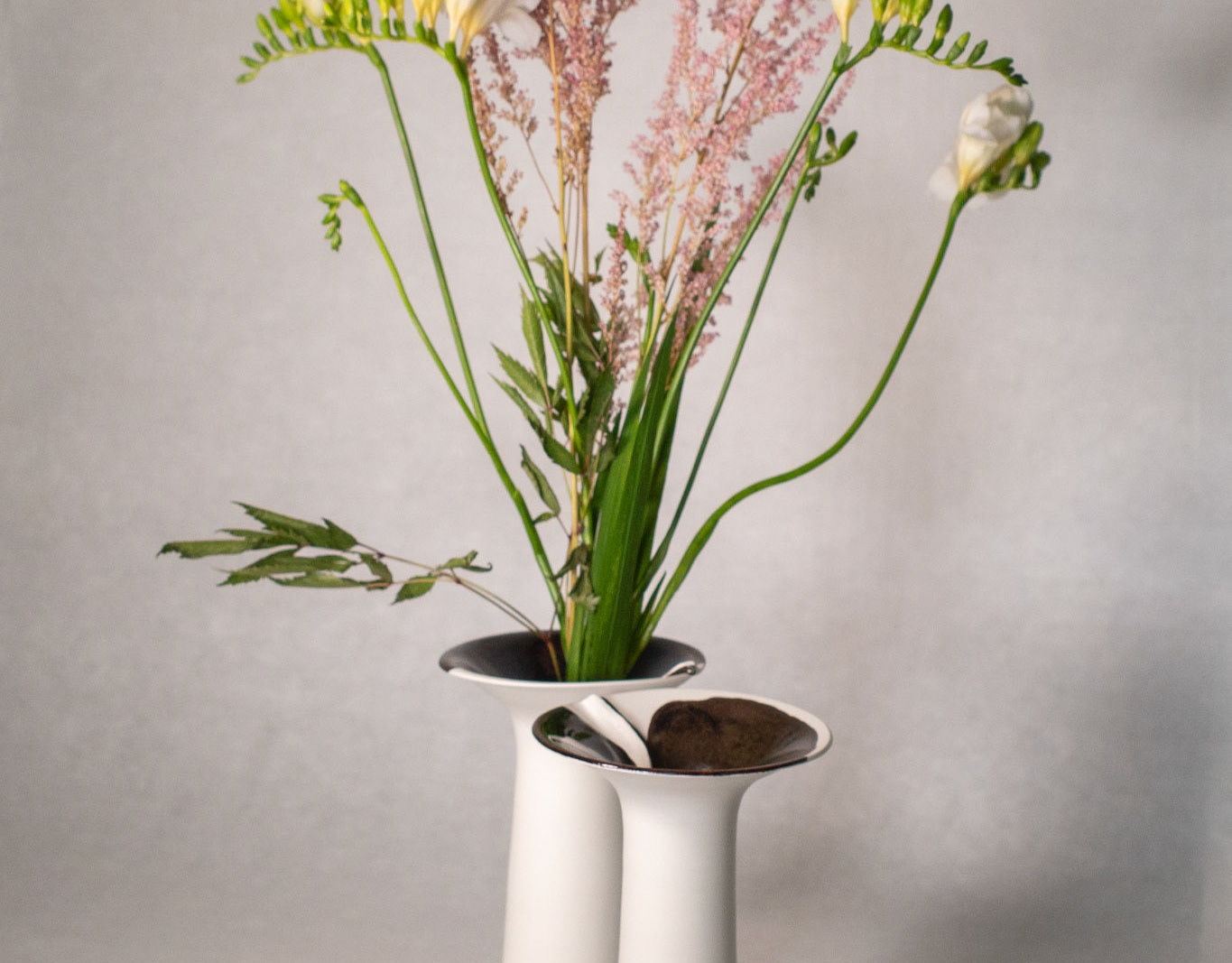
Split
Throwing these porcelain vases only had three pulls chance. After that, the clay gives in to gravity. The top resembles a floating lily or lotus, and the white porcelain splits the dark glaze into streams, creating a small landscape. All 19~20cm tall
2025
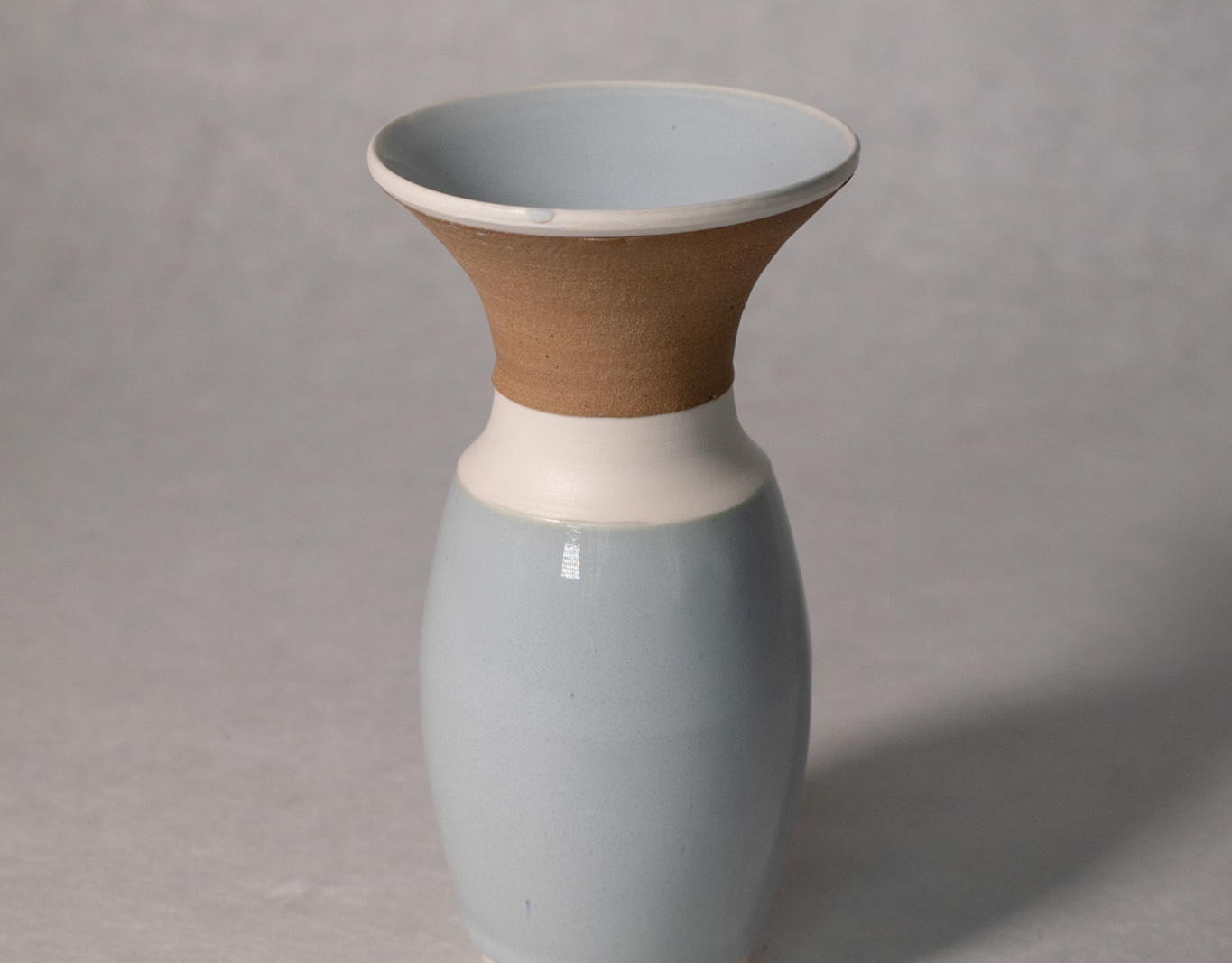
Earthy Fine
This batch spans three months. Instead of glossy glaze, I leave the raw surface from throwing. With trimming knives and sponges, the groggy stoneware gets a fine, gritty texture, although never as smooth as porcelain, but full of character.
The inlay method involves pressing high-value material into a plain clay body. The contrast adds not just visual interest, but a tactile one too—two textures speaking together.
2025
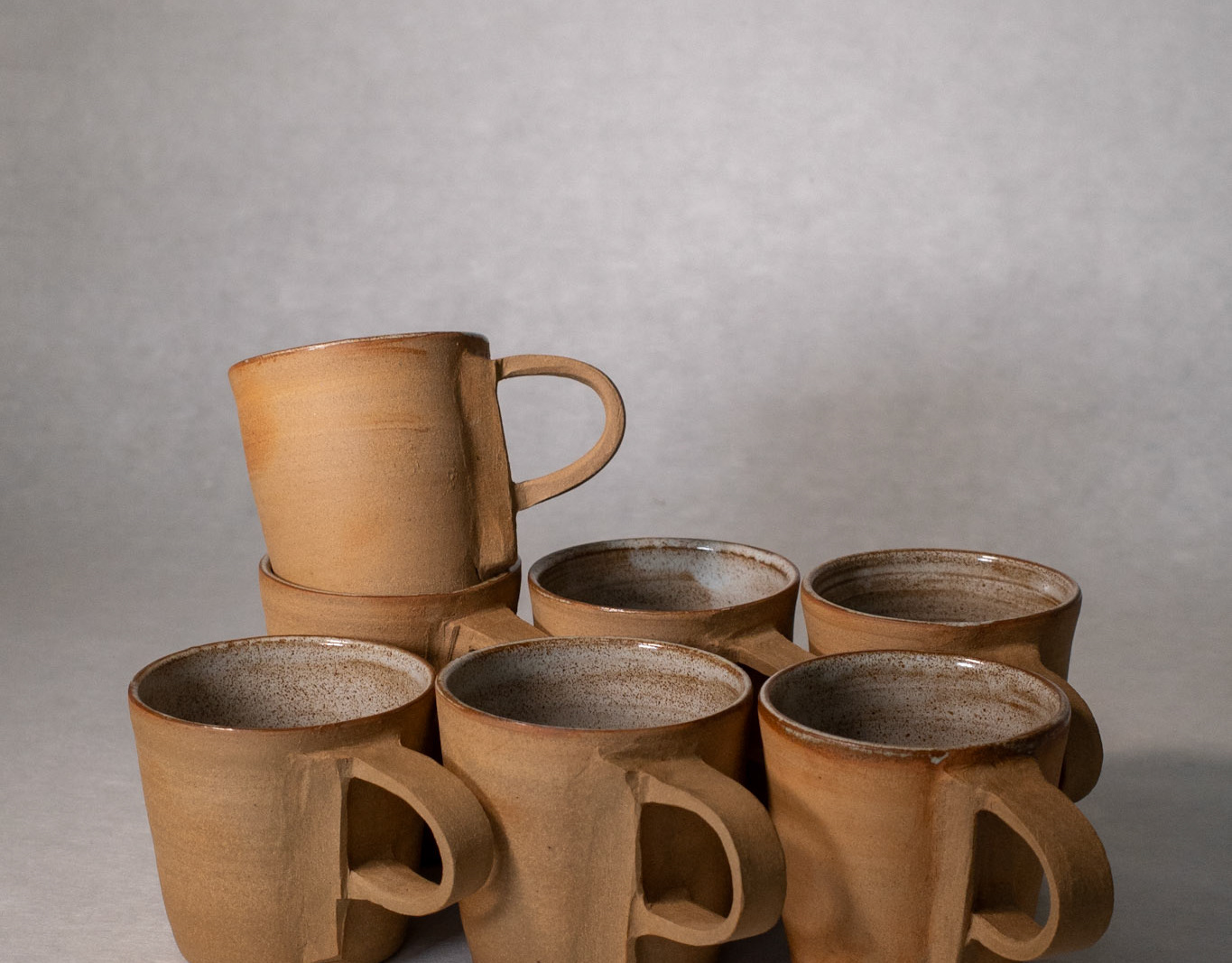
Cliff Mug
Inspired by brutalism's bold concreteness, the sculptural cliff edge exposed texture gave it weight and presence. In cliff form, the fracture arc handle shows structural tension and creates a different facade on the mug.
2025

Impressed Erosion
Inspired by the soft curves of a weathered seashell, the handle is smooth and organic, yet its edges and thickness subtly shift. I flicked the rim and pulled the handle from the porcelain body, I tried to capture that moment of touch—the imprint of creation—leaving a lasting memory within the surface.
2025
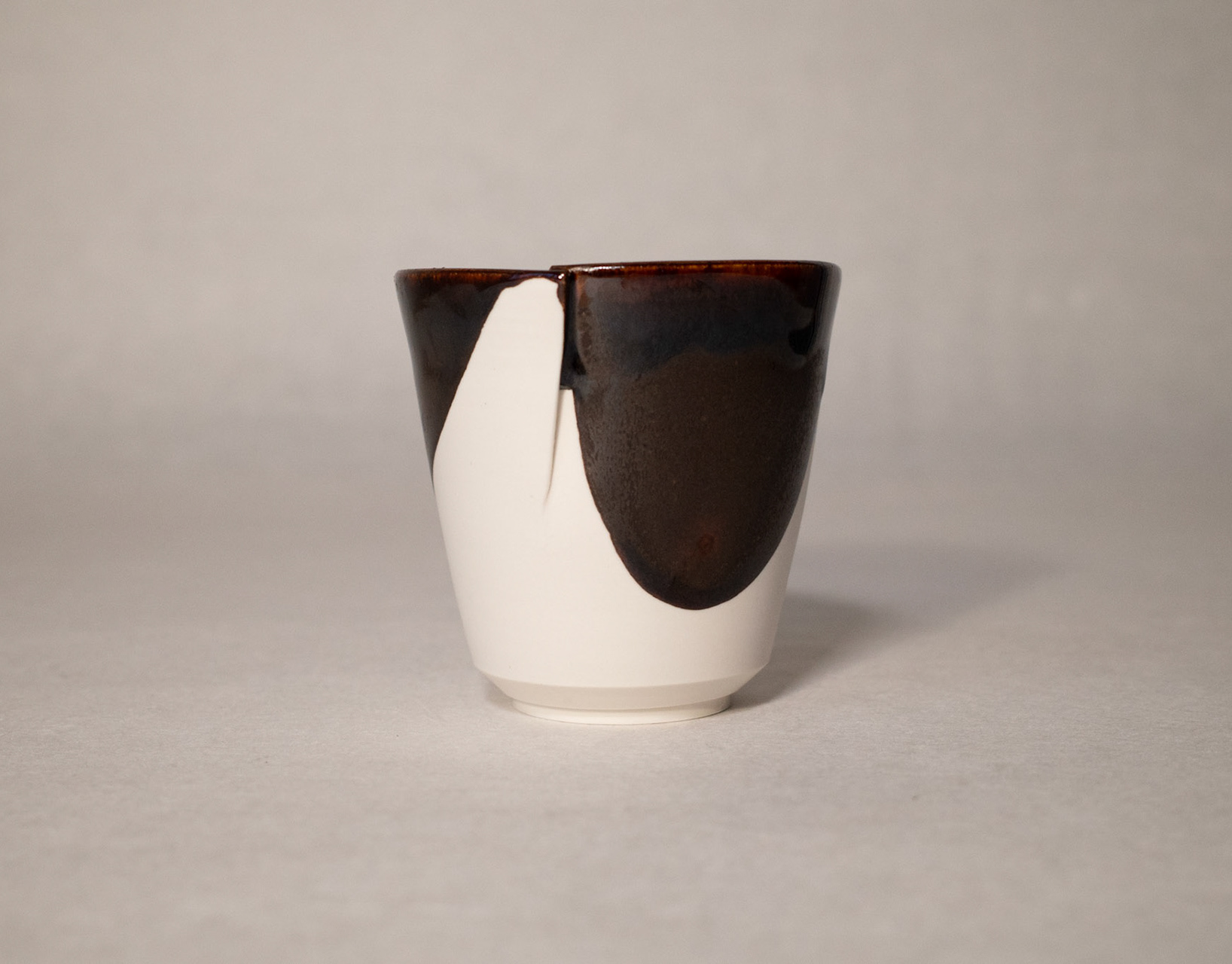
Split cup
This is a test batch of “split cups,” starting with thrown cylinders and truncated cones to find the best shape for cutting and rejoining. The split design is intended to divide and block the pouring glaze pattern.
2025

Split vase (Sold out)
This horn-shaped vase features a tenmoku glaze and is designed to keep flowers upright. The top resembles a floating lily or lotus, and the contrast between the remaining white porcelain and the dark glaze creates a small “landscape”.
2025
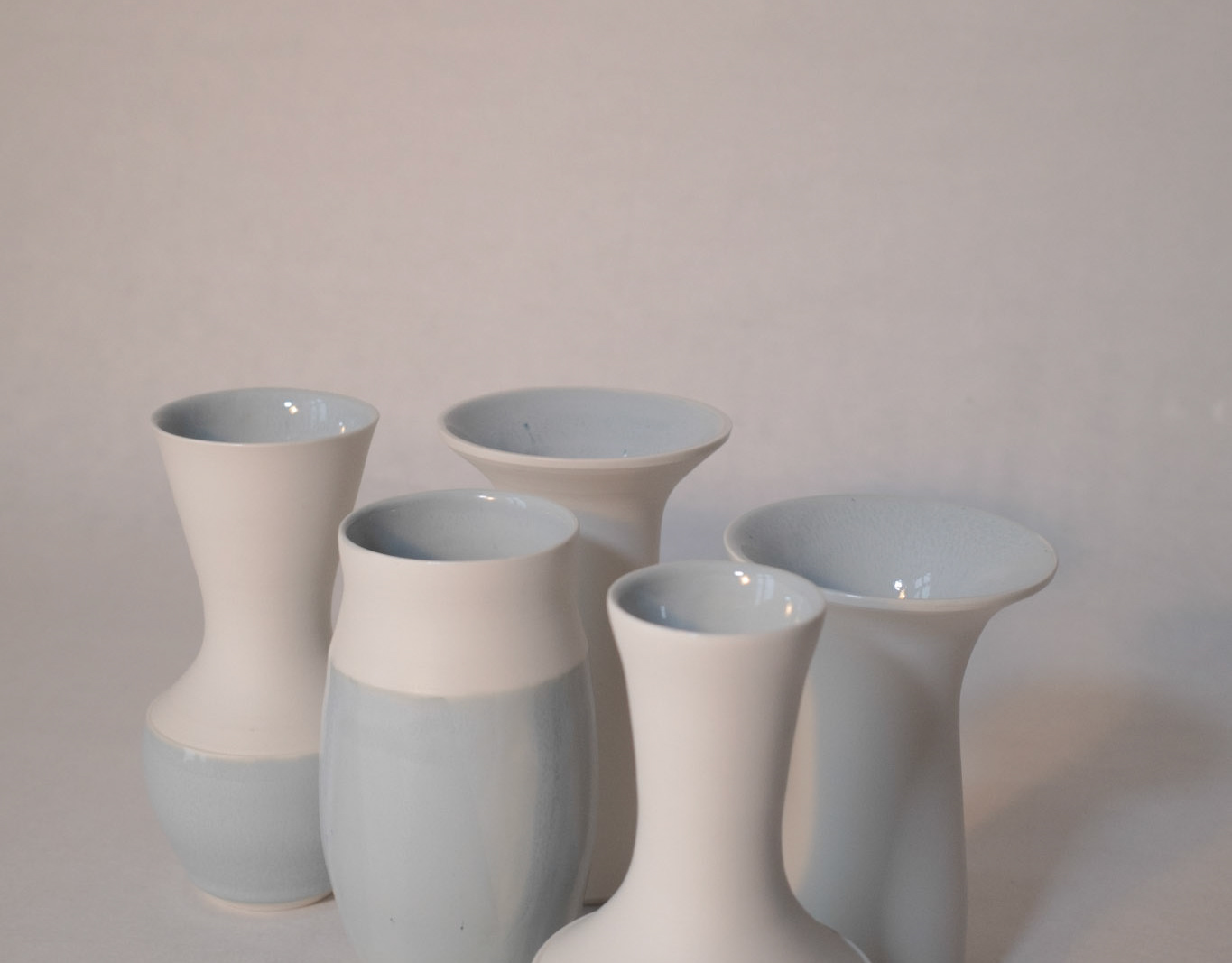
Pale blue vase
2025
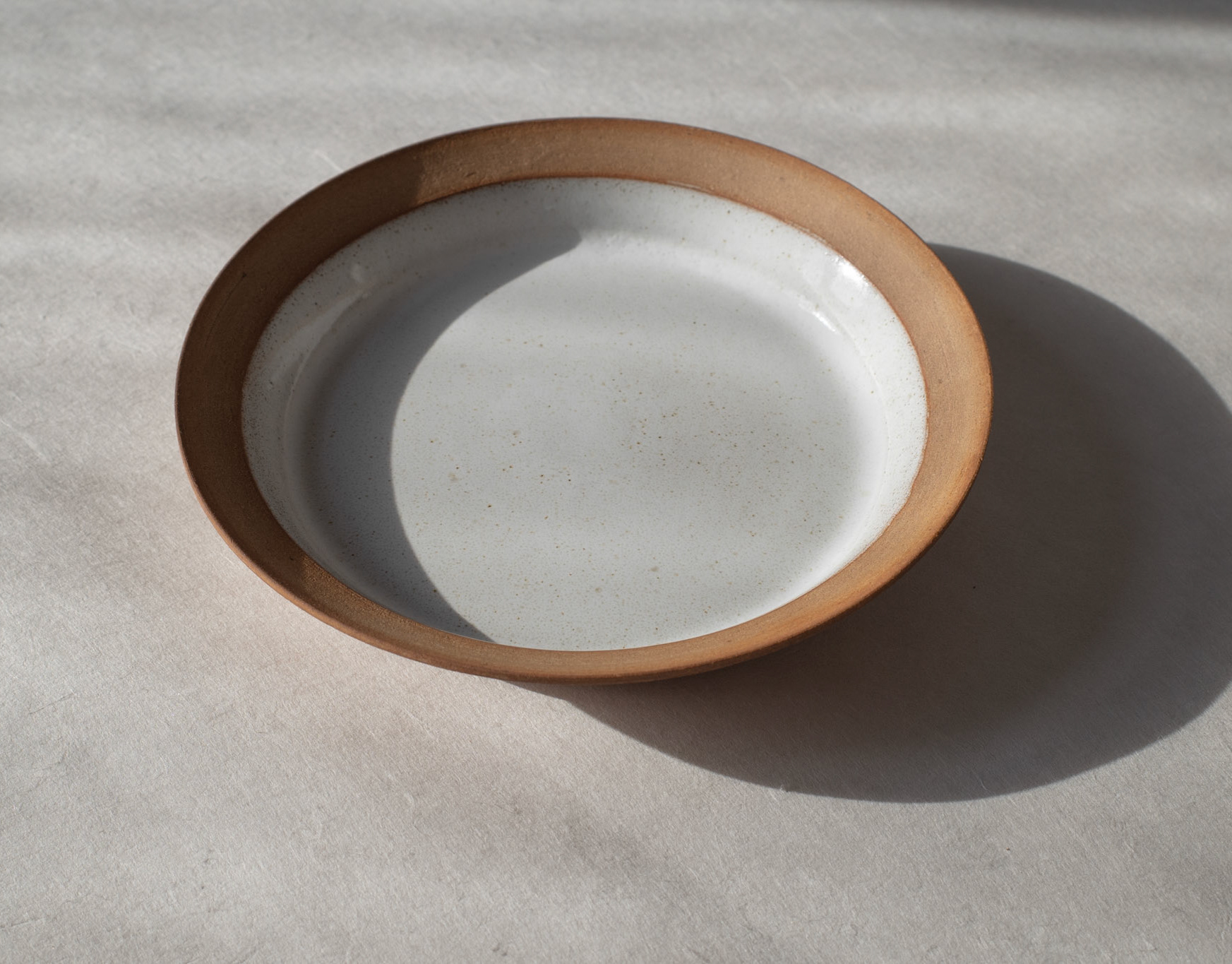
Appetizers plates (Archived)
A series of small plate studies, each formed from 900 g of porcelain. One flat plate measures 19 cm across and 3 cm tall, making it ideal for pastries or small meals. Another version has a gentle slope to concentrate sauces at the center, raising the food for a more refined presentation.
2024
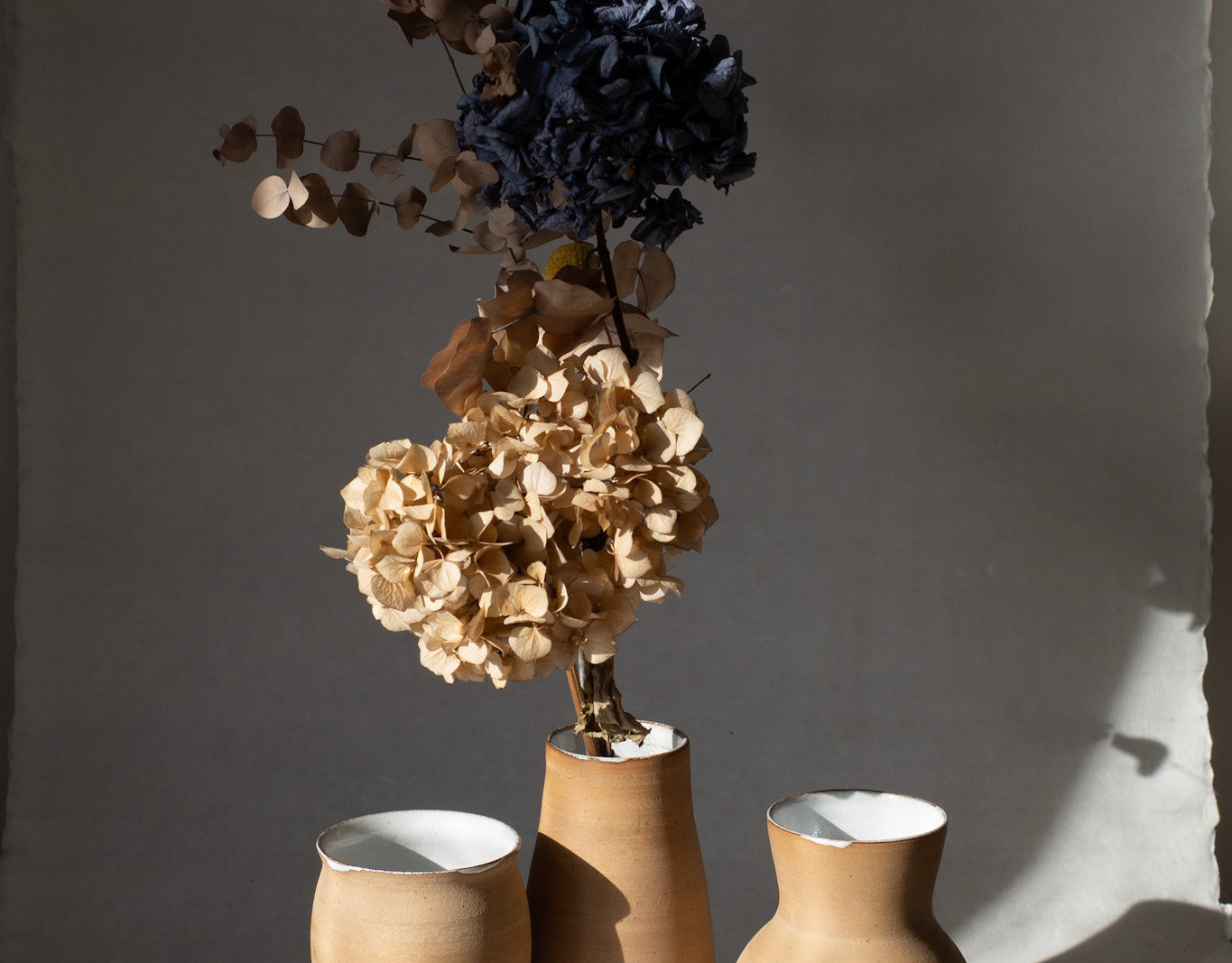
Sand yellow vase (Sold out)
I was fortunate to receive a bag of 591 Goerg & Schneider stoneware clay, especially since I’ve primarily worked with porcelain. When fired to about 1250–1260°C, the clay reveals a distinctive sandy, rock-like texture.
2024
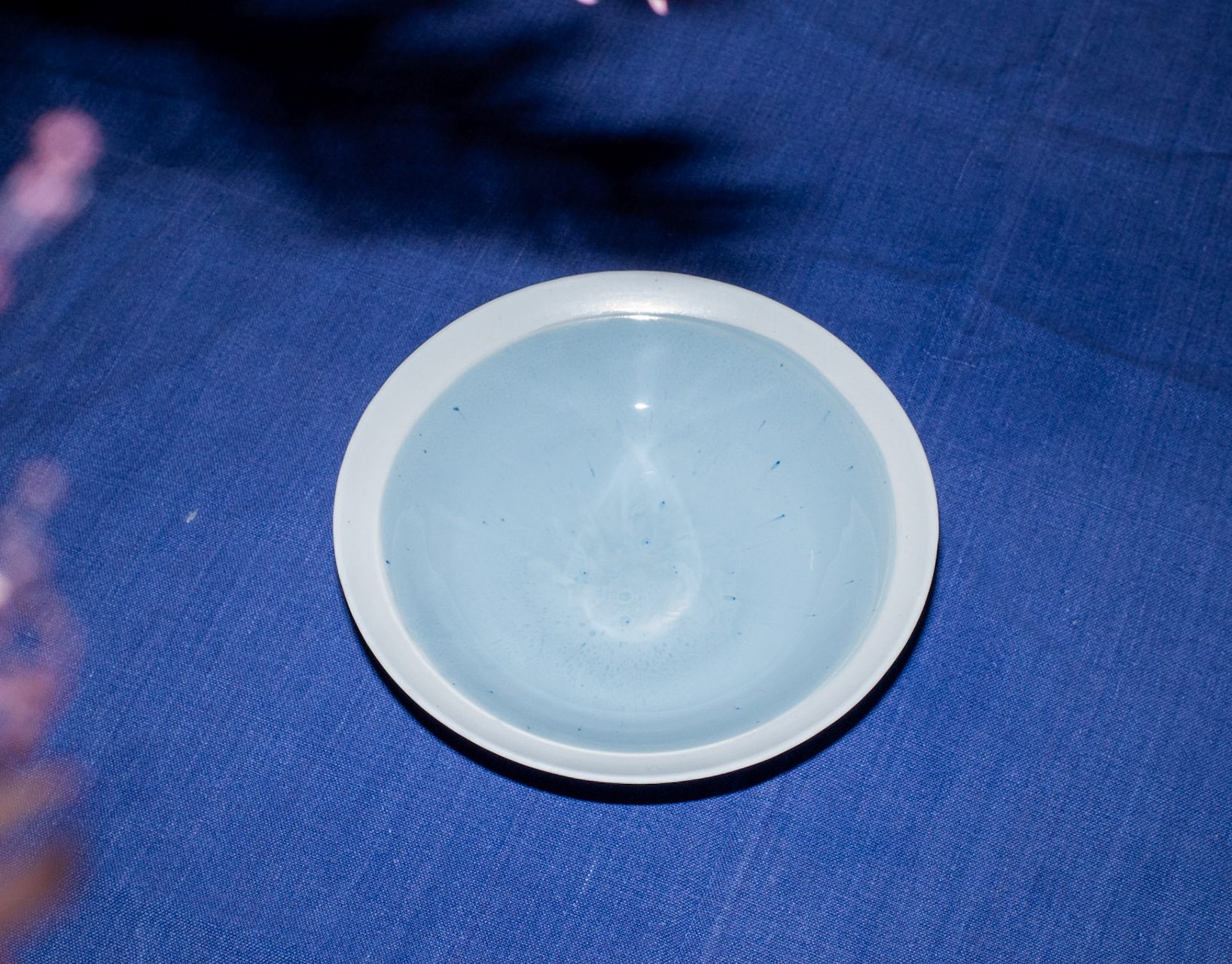
Pale blue shallow bowl (Sold out)
I designed these plates as a wedding gift for my friends Nihit and Simona. They’re shallow bowls measuring 17 cm in diameter and 5.5 cm in height, with a color inspired by the sky and the mosque in Muscat.
2025
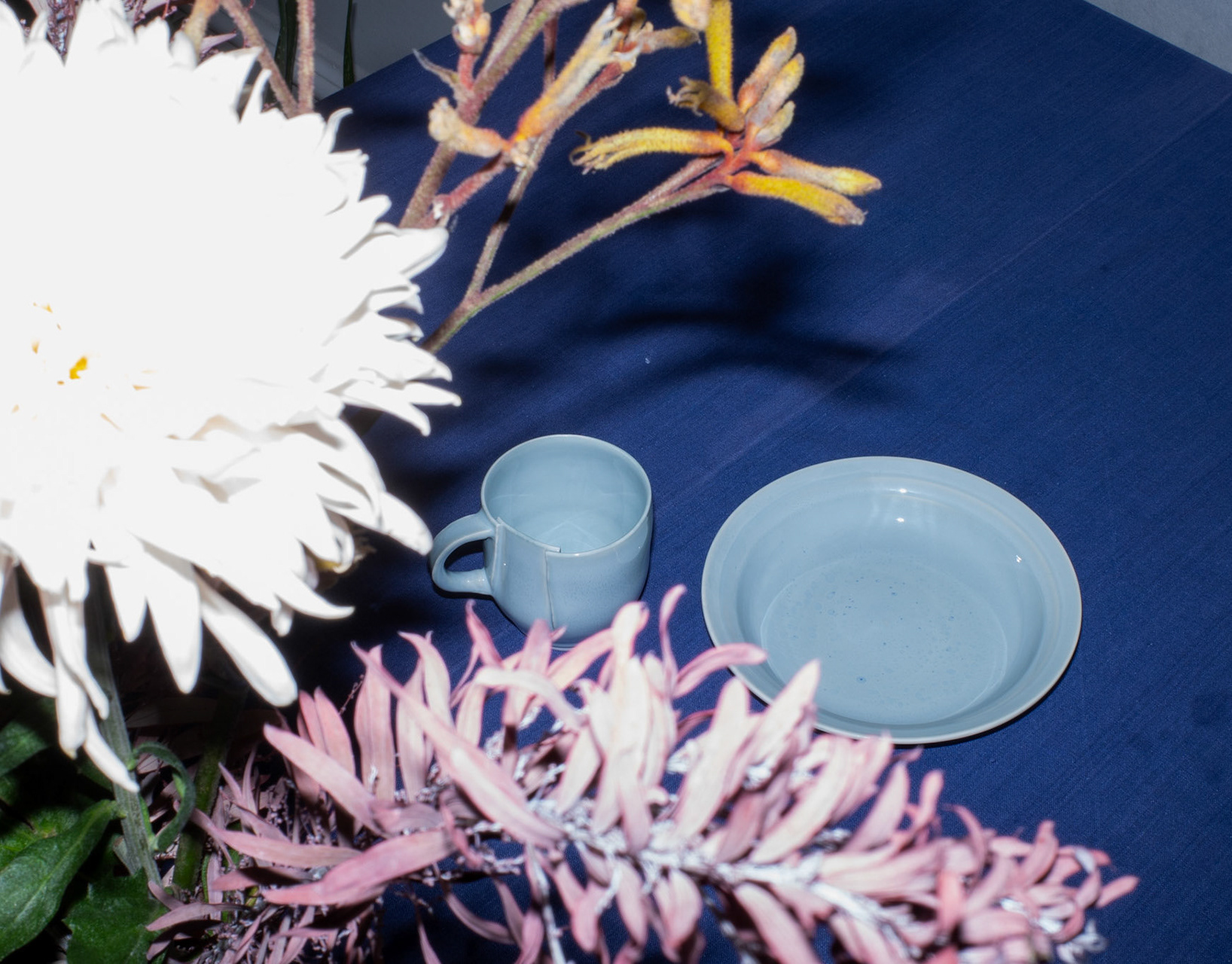
Blue 2024 (Sold out)
This is my first test batch using a pale (baby) blue glaze. I experimented with cutting the cup walls after trimming and refining my handle-pulling technique. The 16 cm plate design is based on a previous study of multi-functional shapes.
2024
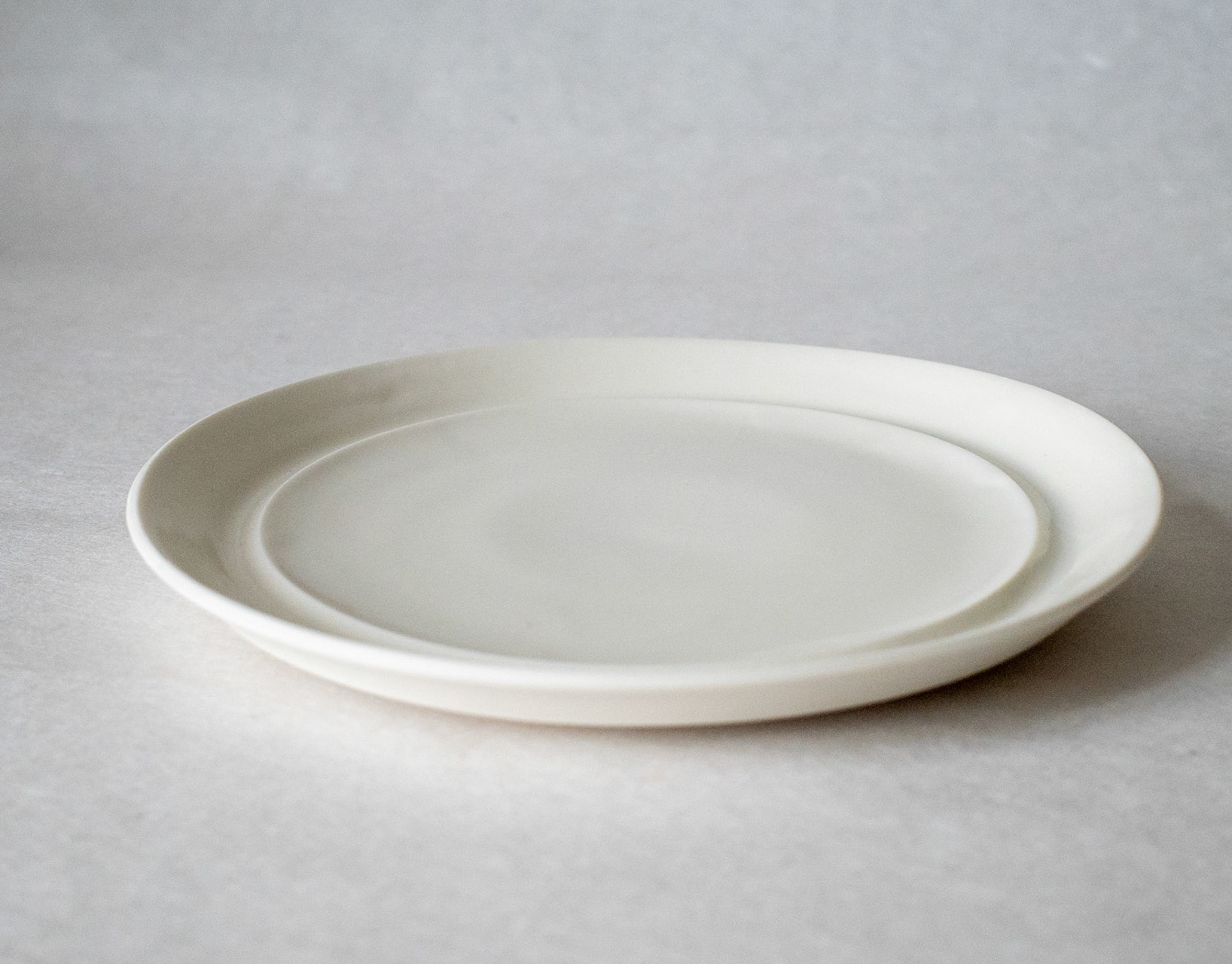
ALRO (Archived)
I design and throw this 22 cm plate as a wedding gift for my friends Alexandra and Rob. Designed for daily use, its low outer ring is ideal for pastries or saucy dishes, and the raised inner ring adds a refined touch by subtly elevating the food.
2023
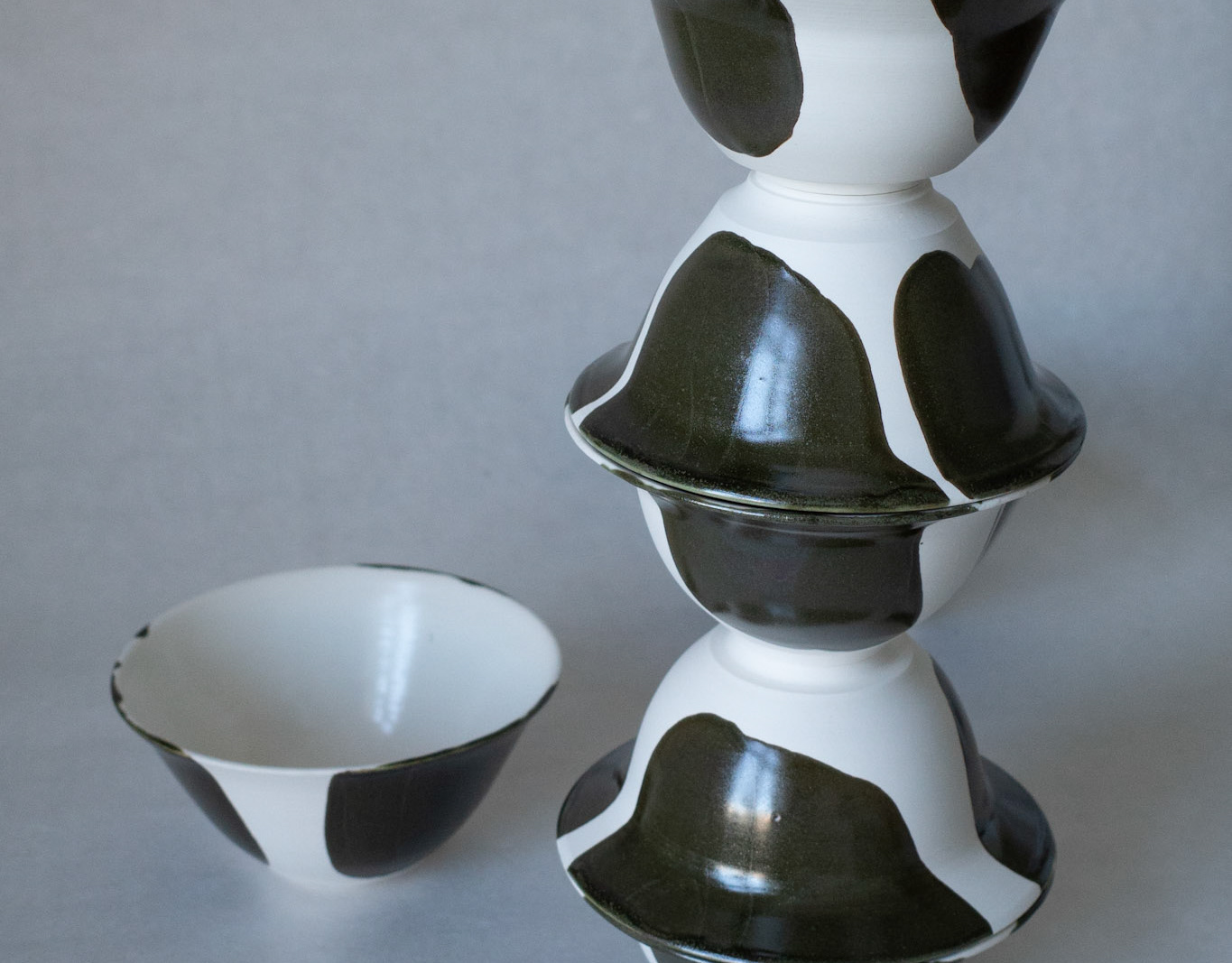
Dark green bowl (Sold out)
2024
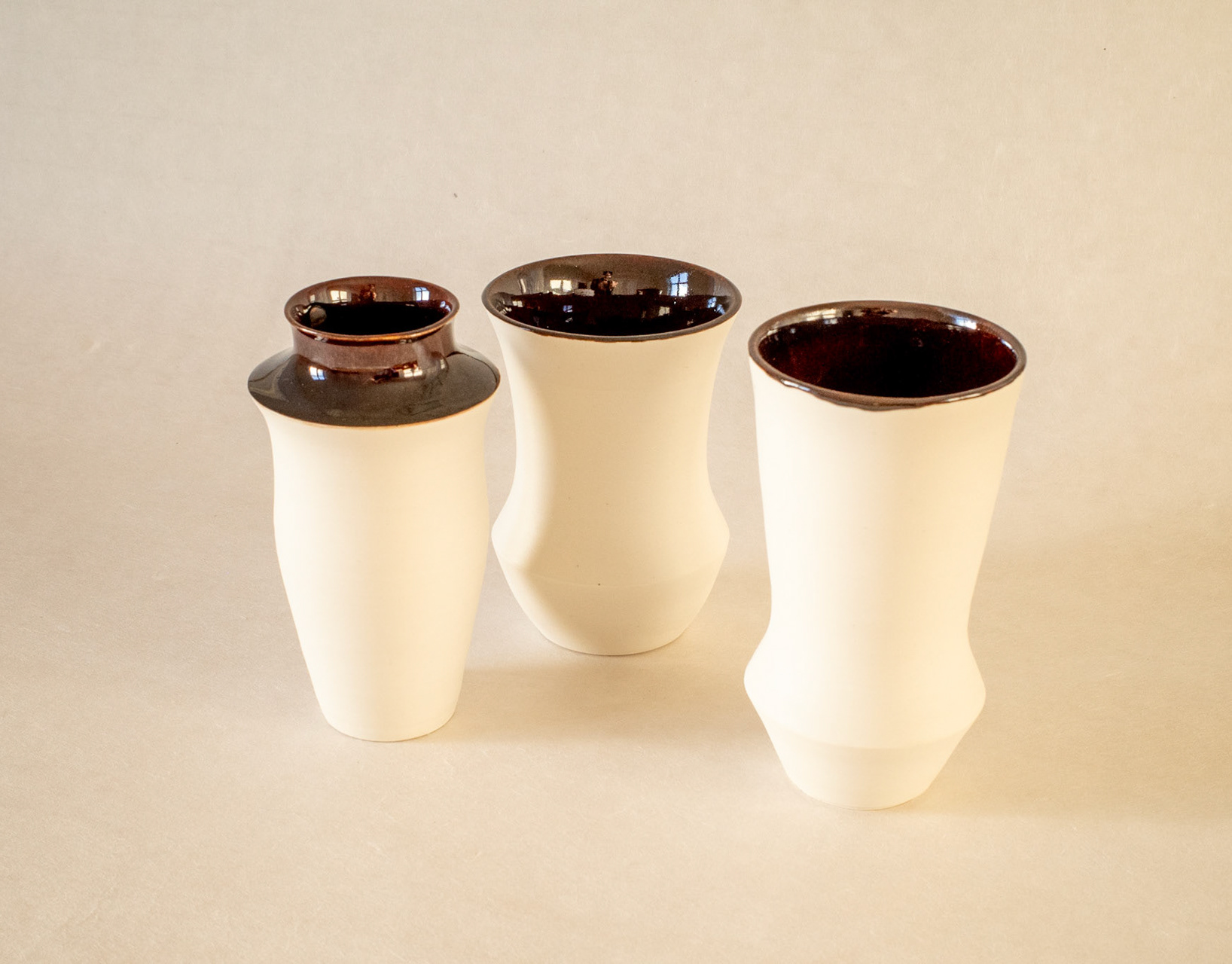
Tenmoku Batch (Sold out)
First the Tenmoku glaze on my porcelain collection.
2024
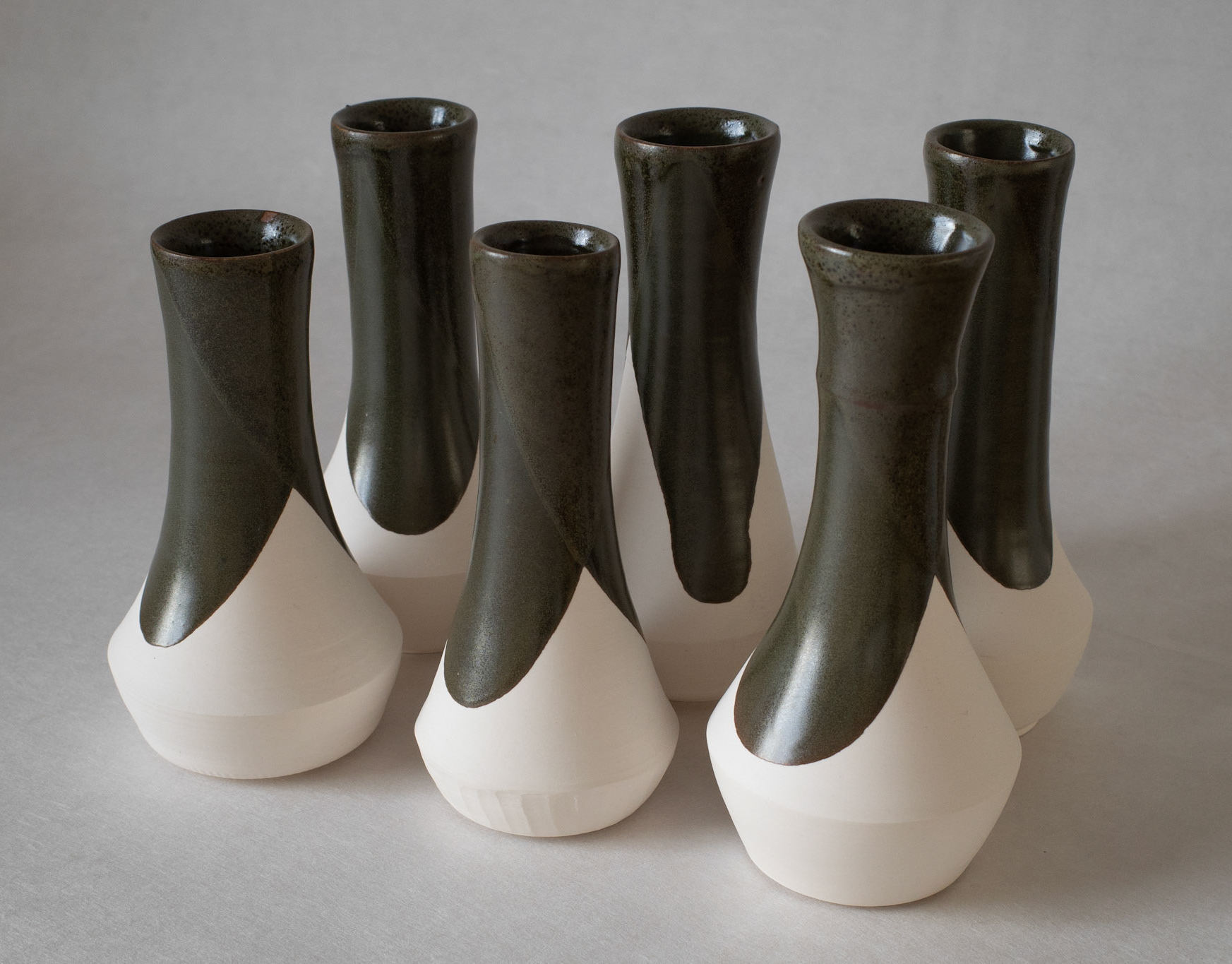
Green iron vase (Sold out)
When iron dioxide is fired at 1200 degrees and cooled at a rate of 50 degrees/ hour until it reaches 800 degrees, it takes on a green color. Underneath the green tone, the red color of iron is visible. The pouring technique is used to create varying glaze thickness on porcelain bodies. This technique is commonly used in East Asia.
2024
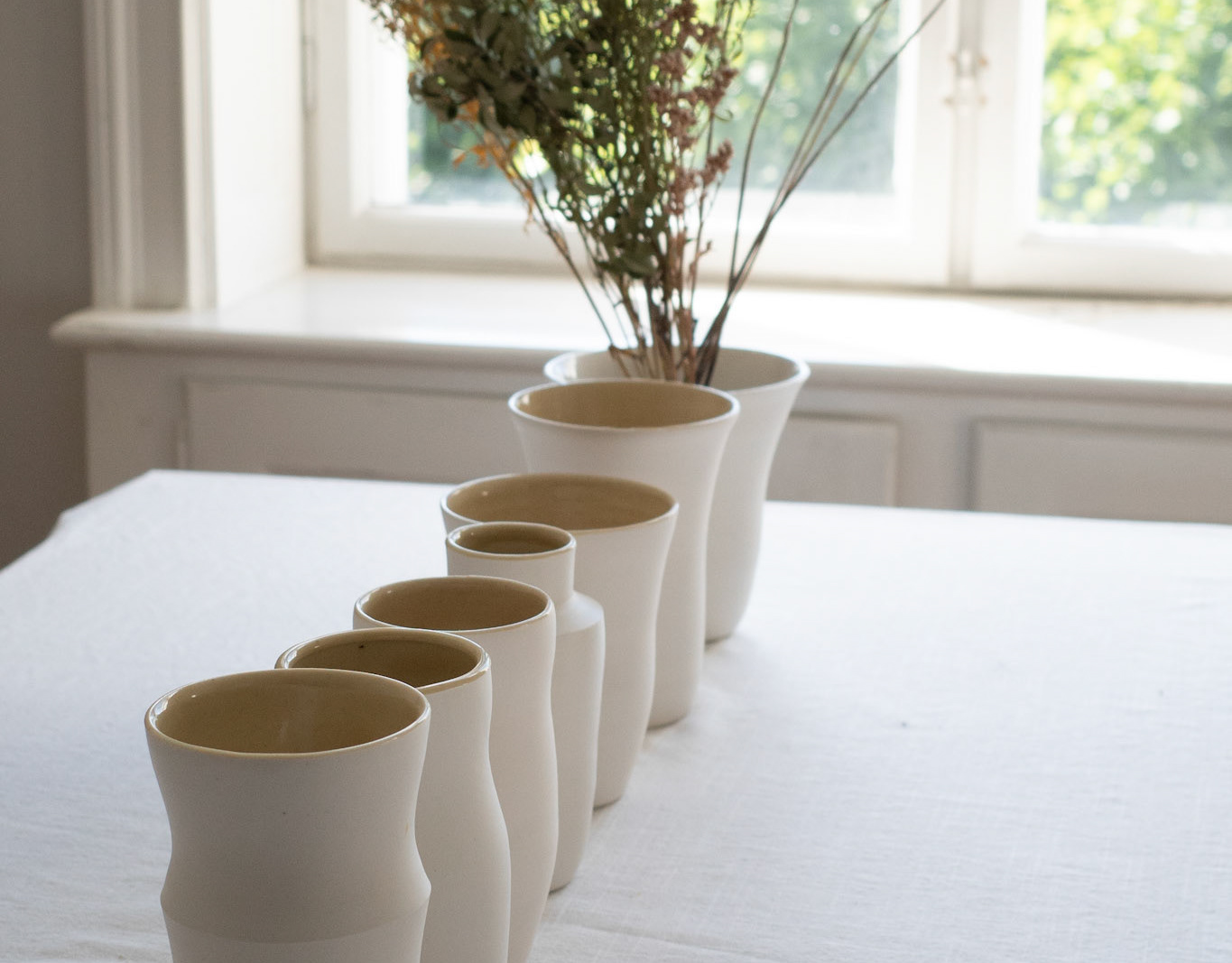
Jasmine yellow vase (Sold out)
Bentonite and a small amount of red iron oxide are used to create the yellow-beige colour of this pottery. When applied in a thinner layer, the colour may look like beer yellow or Jasmine tea yellow porcelain
2024
